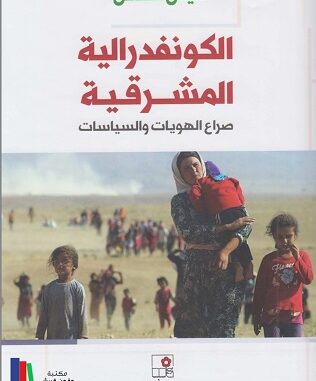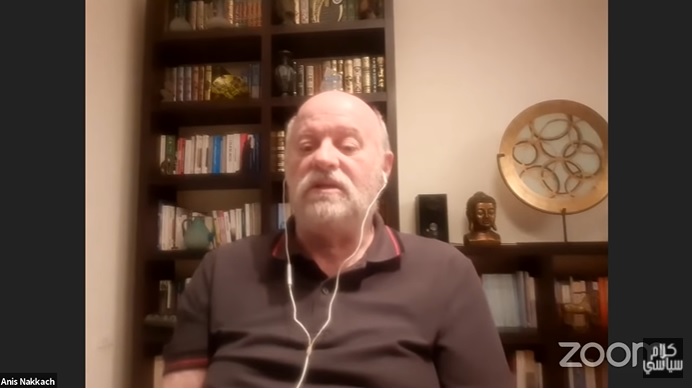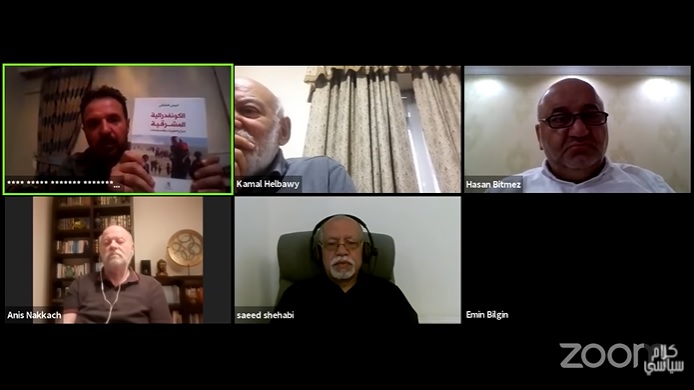
Description:
In a recent conference held on Zoom and published on YouTube, senior Middle East political analyst Anees Naqqash spoke about his 2014 book titled The Levantine Confederation: The Battle of Identities and Policies.
The book proposes that the solution to the chronic problems of the war-ravaged and tumultuous Middle East region lies in the establishment of a confederation that unites the states of the Levant, or what Naqqash often calls the ‘West Asian region’.
Middle East Observer will gradually be publishing English translations of the author’s online talk over several posts. This is part one, which revolves around Naqqash’s initial motivation for developing the concept of a ‘Levantine Confederation’.
(Read Part Two here)
Source: Kalam Siyasi (YouTube Channel)
Date: Aug 26, 2020
(Important Note: Please help us keep producing independent translations for you by contributing as little as $1/month here)
Transcript :
One does not need to be a political or strategic expert in order to know that our (Arab and Islamic) countries are (currently) living through numerous wars, whether internal wars or those of an external (nature); and that international and local powers are participating in these wars; and that the (Arab and Islamic) nation’s capabilities are being exhausted by these wars and violence. Its unity, territorial integrity, potentials, property and civilization are being consumed (as a result).
The worst thing about these wars is that they often tarnish and distort (true) Islamic thought, thus proving that many of those who bear arms (in this region) are in a state of aimlessness regarding the actual and necessary track that they should pursue in order to confront the true enemies of the nation. In other words, it has been proven that many activists and local actors have a weak (level of) awareness. Thus, these topics must be highlighted in order to put things back on track.

The idea of a Levantine Confederation stems from two points. First, history shows that for more than 1400 years our region lived in a state of empire, starting from the Umayyads, to the Abbasids, all the way to the Ottoman Sultanate. Apart from some perversions during the Crusades and the Tatar and Mongol wars, the region lived in (a state of imperial) unity. No foreign power was allowed to intervene in its military, intellectual or economic affairs. However, following the two world wars, the (Arab & Muslim) nation was faced with a set of programs, plans and schemes resulting from its military defeat against the Western powers. This defeat enabled these (Western) powers to set up a very dangerous triangle for us: the Sykes-Picot-Balfour triangle.
The Sykes-Picot Agreement (in 1916) divided the Arab states in the region into small(er) states, while the Balfour Declaration (in 1917) fulfilled the promise of giving Palestine to the Jews for the establishment of a (Jewish) entity, one of the most brutal entities that the (Arab and Muslim) nation has ever faced in the modern era in terms of military, conspiratorial and intelligence capabilities. Today, this (Israeli) entity is posing a new danger, penetrating deep into the nation and the minds of its people.
In addition, these geographical divisions (created by Sykes-Picot and Balfour) established two types of regimes. First, there were the regimes that were built for religious-sectarian reasons, such as the Lebanese state established as a favor for the (Christian) Maronites in Lebanon. However, Lebanon has changed due to shifts in different kinds of balances as Maronites are no longer the largest demographic group (in Lebanon), nor do they occupy the main role in the country. Therefore, Lebanon always suffers from political problems because of its system that is based on sectarian identity, while it is demographically changing in relation to its sects, as some sects weaken and others grow stronger, which causes continuous security disturbances.
In fact, a part of Syrian land was cut off during the drawing of the map of Lebanon. The map of Syria was not drawn by the hands of its people. Rather, it was established based on the lines and borders demarcated by the French, who at that time gave Turkey a part of Syrian territory. Turkey was the only country (in the region) to demarcate its own borders via blood (i.e. through the military sacrifices that it made), because it was defending what was left of the Ottoman Empire. In other words, historically, Turkey was the only country whose borders were drawn with the blood of its people. Meanwhile, Lebanon’s borders were determined by the French Commission (the French body that controlled Lebanon). Many parts of Syrian territory were cut off, and what was left became the Syrian state.

The good thing about Syria is that it preserved its unity against the four-zone division project that the French were planning for. (The French) wanted to establish (four states): an Alawite state, a Druze state, and two Sunni states, one in the north and another in the center; but this project was foiled by the national unity of the Syrians.
Iraq did not demarcate its (own) borders either. Not one Iraqi was involved in the drawing up of the map of Iraq. It was Miss Gertrude Bell – an advisor at the British Foreign Ministry – who drew up the map (of Iraq) and proclaimed Faisal the King of Iraq, based on a sectarian equation that would satisfy both the Shias and Sunnis, and she added some Kurds to a part of the current Iraqi map because (she deemed them) as fierce fighters who would fight against Turkey if a clash broke out between Iraq and the new Turkey.
(Winston) Churchill established Jordan and drew up its map. There was no country called Jordan. The establishment of Jordan fully complemented the British project to establish the State of Israel, in addition to Iraq which was also a British protectorate.
In conclusion, the Levant was suffering from the delineation of borders that were carried out without consultation with its people. (The Levant) was divided up, and new, quasi-national territorial identities were established alongside the sectarian and religious identities that continued to play an (important) role too.
(Read Part Two here)
—–
Subscribe to our mailing list!

Leave a Reply